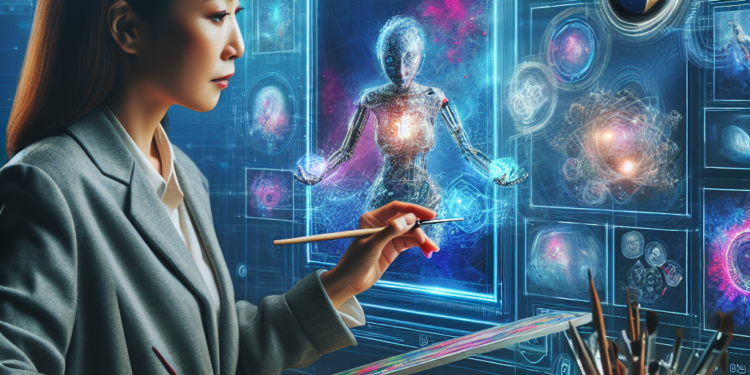AI in Creating and Selling Digital Art
Artificial Intelligence (AI) has been revolutionizing the way we create and consume art, with digital art being a prime example of this transformation. In recent years, AI has made significant strides in generating and selling digital art, blurring the lines between human creativity and machine intelligence. This article explores the role of AI in creating and selling digital art, and examines the implications of this technology on the art world.
AI has fundamentally changed the way artists create digital art. With the advancement of deep learning algorithms and generative models, AI can now generate realistic and visually stunning artwork that rivals the work of human artists. One of the most popular AI techniques for creating digital art is Generative Adversarial Networks (GANs), which involve two neural networks – a generator and a discriminator – competing with each other to create lifelike images. This technology has been used to create paintings, drawings, and even music compositions that are indistinguishable from human creations.
Many AI-powered art tools are now available to artists, enabling them to enhance their creative process and push the boundaries of their imagination. These tools can generate ideas, provide inspiration, and assist in the creation of complex digital artwork. For example, Google’s DeepDream software uses neural networks to transform images into surreal and dreamlike visuals, while Adobe’s Sensei platform offers AI-powered features that can help artists refine their designs and achieve professional results. These tools have democratized art creation, allowing artists of all skill levels to experiment with new techniques and styles.
AI has also revolutionized the way digital art is sold and distributed. Online marketplaces such as ArtStation, Saatchi Art, and Sedition now feature AI-generated art alongside traditional artwork, offering a new avenue for artists to showcase and sell their work. AI-generated art pieces are often sold as limited editions or as digital downloads, allowing buyers to collect unique and rare artworks created by algorithms. This has created a new market for AI art collectors, who are drawn to the novelty and innovation of machine-generated artwork.
In addition to online marketplaces, blockchain technology has enabled the creation of digital art marketplaces that use smart contracts to ensure the authenticity and provenance of AI-generated artworks. Platforms like SuperRare and KnownOrigin allow artists to tokenize their digital creations as Non-Fungible Tokens (NFTs), which can be bought, sold, and traded on the blockchain. This has created a new form of digital art ownership, where collectors can own and display AI-generated art in a secure and transparent manner.
The rise of AI in creating and selling digital art has raised several ethical and philosophical questions about the nature of art and creativity. Many critics argue that AI-generated art lacks the emotional depth and intentionality of human-created art, and question whether artworks created by algorithms can be considered true art. Others argue that AI art challenges traditional notions of authorship and creativity, blurring the lines between human and machine intelligence. The debate over the authenticity and value of AI art is ongoing, with supporters and detractors on both sides of the argument.
Despite these debates, AI has undoubtedly had a profound impact on the art world, opening up new possibilities for artists and collectors alike. AI-generated art has the potential to inspire new forms of creativity and expression, pushing the boundaries of traditional art practices and challenging our perceptions of what art can be. As AI technology continues to evolve and improve, we can expect to see even more groundbreaking developments in the field of digital art, with AI playing an increasingly prominent role in the creation and sale of artwork.
In conclusion, AI has revolutionized the way we create and sell digital art, with machine intelligence ushering in a new era of creativity and innovation. From AI-powered art tools to online marketplaces and blockchain platforms, AI has transformed the art world in profound ways, offering new possibilities for artists and collectors to explore. While the debate over the authenticity and value of AI art continues, there is no denying the impact that AI has had on the digital art scene. As technology evolves and creative boundaries are pushed, we can expect to see even more exciting developments in the field of AI-generated art in the years to come.













